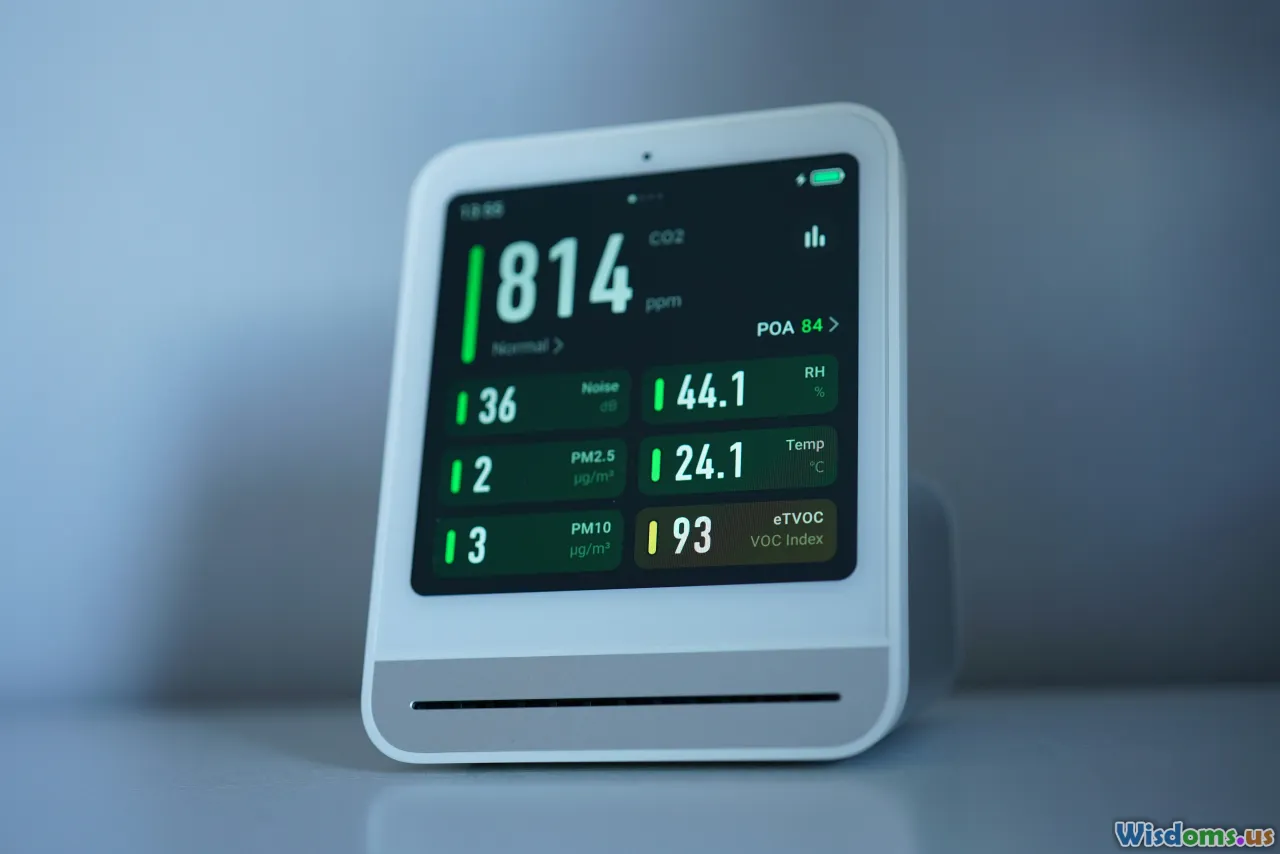
What Happens When Hackers Target Medical IoT Devices
15 min read Explore the critical risks and real-world impacts when hackers target medical IoT devices in healthcare environments. (0 Reviews)
What Happens When Hackers Target Medical IoT Devices
Imagine walking into a hospital. Monitors beep steadily, infusion pumps deliver medication, insulin pumps maintain blood sugar—lives depend on each stream of data. But what if—invisibly and silently—hackers manipulated those devices? In our increasingly digital healthcare world, the fusion of medicine and technology is a double-edged sword. Medical Internet of Things (IoT) devices have revolutionized treatment options but introduced grave cybersecurity risks. When hackers target these devices, the ramifications reach far beyond mere data theft. They threaten lives.
The Anatomy of Medical IoT: Why Are Devices Vulnerable?

Medical IoT refers to interconnected devices—heart monitors, wearable biosensors, smart beds, infusion pumps, and more—that communicate health data in real-time. Individually, they enhance patient care and enable remote monitoring. But as with all internet-connected tech, their security is only as strong as their weakest link.
Outdated Software and Legacy Devices
Many hospital devices run outdated operating systems or firmware that the manufacturer no longer supports. A 2023 report by CyberMDX and Philips estimated that 53% of hospital devices were using software with critical vulnerabilities. Manufacturers haven't kept pace with modern security standards, prioritizing continuous operation over constant updating.
Lack of Cybersecurity by Design
Unlike consumer electronics, medical device development has revolved around clinical functionality—not infosec. FDA regulations around cybersecurity are relatively new, so many deployed devices missed these requirements. Weak default passwords, unencrypted communication channels, and open ports abound.
Vast Attack Surface
A single large hospital network may run 10,000 to 15,000 medical IoT devices. Each device added is an additional avenue for intrusion. Hackers no longer need to scale network perimeters; they can find vulnerable entry points deep inside.
What Are the Motives and Methods of Attackers?

Why would anyone target a medical device? While the vulnerability is clear, motivations are more nuanced and extend beyond pure mischief.
Ransomware: Holding Lives Hostage
One of the most damaging trends is ransomware. Rather than seeking personal medical data, attackers encrypt device functionality, halting operations and demanding hefty ransoms. In 2021, the ransomware group Conti reportedly demanded tens of millions from health systems after disabling critical equipment. Some attackers even threaten to tamper with therapeutic dosages remotely.
Patient Data Theft: A Lucrative Market
Medical records fetch premium rates on the dark web, valued at up to $1,000 per record—folds above a compromised credit card. Through compromised IoT endpoints, attackers siphon off confidential patient health information, exposing victims to identity theft, insurance fraud, or worse.
Sabotage and Actual Harm
Though rare, the most chilling possibility is deliberate manipulation. In a simulated hack in 2019, IT security firm WhiteScope researchers remotely altered dosages on infusion pumps—demonstrating the frightening potential to cause lethal errors.
Nation-State Intrusions
Some adversaries target hospitals to destabilize critical infrastructure during geopolitical tension. In 2022, multiple ransomware attacks struck Ukraine's health sector, suspected to originate from hostile state actors aiming to cripple care delivery.
Real-World Incidents: When Security Fails

What happens when theory becomes reality? High-profile attacks, some reported, others quietly resolved, show the true danger.
2017: WannaCry and the Global Wake-Up Call
The infamous WannaCry ransomware hit the UK's National Health Service, scrambling files and disrupting machinery, leading to canceled surgeries and diverted ambulances. While not all devices were directly affected, incompatible software and networked medical equipment amplified the disruption.
Insulin Pumps Recall
In 2019, Medtronic recalled 4,000+ insulin pumps after security researchers found they could be remotely manipulated to deliver fatal dosages. The recall was a rare admission of the safety threat—but lagged years behind initial reports.
Infusion Pump Warnings
In 2020, the US Cybersecurity and Infrastructure Security Agency (CISA) issued successive warnings on critical vulnerabilities in widely used infusion pumps. The flaws enabled remote attacks that could alter drug delivery—a theoretical attack, but technically feasible.
Baby Monitors and Exposed Networks
Even consumer-grade remote baby monitors used in pediatric wards have been hijacked by hackers. In multiple instances, unfamiliar voices spoke through hospital monitoring systems, alarming staff and families. These chilling incidents underscore how seemingly harmless IoT devices are fateful entry points for hackers.
The Human Cost: Damage Beyond Data

It's tempting to imagine IoT hacks primarily as digital problems, but consequences are tragically corporeal, impacting vulnerable lives in real time.
Treatment Disruption
Sudden shutdown or incorrect operation of ventilators, pacemakers, or infusion devices can cause immediate injury, even death. According to a 2022 Ponemon Institute study, 62% of surveyed health care organizations reported that ransomware disruptions worsened patient outcomes; one in four confirmed direct links to increased patient mortality.
Loss of Trust and Fear
When the public learns that someone could hijack a life-supporting device, anxiety skyrockets. Patients delay procedures. Staff, uncertain about the reliability of their tools, grow nervous—sometimes bypassing digital systems in favor of slower manual work.
Financial and Reputational Fallout
Cyberattacks that lead to even temporary shutdowns cost hospitals millions in lost revenue and emergency mitigation. In 2023, a breach at one US hospital chain had estimated total costs—ransom, legal, delayed care—of over $12 million. The longer-term damage to reputation and regulatory scrutiny can take years to undo.
How Hospitals and Manufacturers Respond

These escalating threats have triggered a tsunami of industry responses, although progress remains uneven.
Patch Management: The Unfinished Project
More device manufacturers are now issuing regular security updates and requiring users to install patches promptly. Unfortunately, many hospitals report lacking sufficient IT personnel or downtime windows to execute these upgrades safely, leading to patch gaps that attackers exploit.
Network Segmentation
Best practice involves isolating medical equipment on segmented internal networks, minimizing exposure if one segment is breached. Firewalls and intrusion detection systems are becoming standard, but retrofitting legacy systems with modern network architectures is a resource-intensive challenge.
Stronger Authentications and Logging
Manufacturers increasingly disable default credentials or require multi-factor authentication for remote device management. Improved logging of who accesses what and when helps in both real-time detection and forensic analysis post-incident.
Threat Intelligence Sharing
A cultural shift in healthcare now encourages transparent disclosure of cyberattacks. Health-ISAC in the US coordinates sector-wide information sharing, enabling a swifter, collective defense. In the past, organizations hushed up breaches due to fear of liability or bad publicity—ironically enabling copycat attacks elsewhere.
Regulatory Landscape: How Laws and Standards Are Evolving

Government and regulatory action is quickly catching up to medical IoT’s unique risks.
Recent FDA Rules
Since late 2023, the FDA has refused to authorize new internet-connected medical devices that lack a robust, documented security plan. These rules require manufacturers to publish a software bill of materials (SBOM), proactively monitor for threats, and issue timely patches. While this only binds new devices, pressure is mounting to backfit existing technology under these standards.
Global Compliance Models
The European Union's Medical Devices Regulation (MDR) includes comprehensive cybersecurity obligations for any device sold in the single market, extending liability to manufacturers for security flaws. Australia, Japan, and other major economies are following suit, creating international harmonization.
Data Protection Laws
Regulations like HIPAA (USA), GDPR (EU), and evolving privacy rules worldwide hold hospitals liable not only for data breaches but their proactive efforts to protect patient information—raising the bar for technology procurement and vendor selection.
What Hospitals and Patients Can Do: Actionable Steps to Reduce Risks

Staying one step ahead of attackers requires vigilance at every level, from major health systems down to individual patients using wearable injectors. Here is an actionable checklist to fortify your defenses:
For Hospitals and Health Providers
- Inventory Devices: Know every IoT device installed across facilities, including brand, version, and patch history.
- Isolate Critical Devices: Segment life-critical and data-rich devices on separate, minimal-access networks.
- Implement Multi-Factor Authentication: Ban default or shared passwords, and enforce multi-factor access for administrative controls.
- Schedule Regular Updates: Coordinate with device vendors for timely security patches. Plan for safe downtime to deploy updates.
- Monitor Traffic Anomalies: Deploy tools that detect uncharacteristic network or device behaviors that may signal a breach.
- Train Staff: Run regular awareness campaigns on phishing, device protocol, and reporting suspicious events.
- Participate in Threat-Sharing Networks: Share incident reports with broader health ISACs and stay current on evolving threats.
For Patients and Users of Home Health Devices
- Register Devices and Subscribe to Updates: Always register new health IoT devices for timely alerts.
- Change Default Logins: Replace manufacturer-set passwords immediately upon setup.
- Secure Home Wi-Fi: Use strong encryption and change network keys regularly to shield devices from neighbors or passers-by.
- Limit App Permissions: Only install manufacturer-approved companion apps, and limit exposure of personal information.
- Spot Tampering Signs: If a device acts unpredictably, contact support and document irregularities—don’t ignore unexpected glitches.
The Future of Secure Medical IoT

Despite the alarming risks, innovation marches onward. Secure-by-design standards, AI-powered intrusion prevention, and tighter vendor regulations form the foundation of a safer era for digital health. Blockchain may find a niche in device identity and traceability. Ethical hacking programs now reward researchers for exposing bugs before criminals discover them.
Ultimately, as the pressure to digitize care intensifies, so does our collective obligation to build, buy, and use medical IoT that is safe from intrusion. The price of neglect isn’t just a headline or a lawsuit—it’s a real person, in a real hospital bed, relying not just on medical science but the invisible trust that our digital tools won’t fail them at the worst possible moment. Protecting that trust is the only prescription for a future where digital medicine can truly heal.
Rate the Post
User Reviews
Popular Posts
















